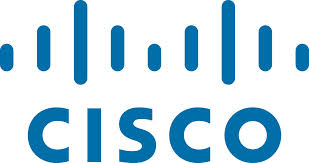Tuesday, March 27, 2012
The Business Value of Mobility for Collaboration
I’m continuing the mobility theme here for my series of posts to support the CIO Collaboration Network. My last post served as an introduction to my role in this program, and to explain that while Avaya is the sponsor, I won’t be writing about them, or any other vendor for that matter. These posts are just thought leadership about trends I’m seeing in the collaboration space.
This month my focus is on mobility, and each post looks at a specific aspect of that topic. Last week’s post addressed some issues around the impact of consumerization, and now I’m going to shift over to the business value of mobility.
In terms of improving our ability to collaborate, the business value that mobility brings should be obvious. Fair enough, but let’s look beyond that, since business value can mean many things. The financial impact is the logical starting point, but this is actually a bit complicated. In most businesses, the financial challenge around mobility is managing costs. Unlike fixed telephony, where IP is bringing costs down, mobility costs can easily spiral out of control, especially for global travelers.
Of course, with smartphones and tablets, mobility costs have two main components – voice and data. Until 4G and LTE become the norm, telephony costs will remain high with mobility, and we just have to accept that as a fact of business life. Data costs are driven by bandwidth consumption rather than minutes and connectivity, and deliver a wider range of collaboration capabilities. Enterprises have more leverage here to negotiate volume deals with carriers, and for the most part, bandwidth costs are coming down. As such, the cost of supporting mobility is not that straightforward to calculate, let alone manage.
To get a more complete picture, you also need to factor in various other costs to support mobility as well as extend PBX-based features/functions to those devices. I’m thinking here about network-related costs to address things like FMC integration, data backup, storage, security, privacy, bandwidth prioritization, etc. Conversely, the associated costs here can be offset by BYOD, whereby employees are bearing the cost to acquire these devices. This will likely become a fluid area, as enterprises evolve policies around the cost and ownership of smartphones and tablets. There is much more to consider here, but this will suffice for purposes of my post.
Cost is one side of the business value equation, and however you define what’s being spent on mobility, the “value” is all relative to the benefits that accrue in return. I would need many posts to explore all the benefits that mobility brings to collaboration, and for now, I’ll just cite a couple to illustrate the scope of what’s possible. First would be the immediate benefits, and then there are the longer-term results to consider.
The initial benefits are more evident for smaller scale forms of collaboration, either for 1-to-1 situations or addressing imminent needs. In these cases, voice-based collaboration will usually get the job done, and the business value of mobility comes from basic things like higher availability, accessibility and responsiveness. The underlying benefit comes from the fact that employees are increasingly not tethered to their desks, and mobility allows them to be equally productive away from the office.
I view the longer term benefits as having far greater business value to enterprises. By longer term, I mean the normalization of mobility as a productive work mode. Collaboration aside, mobility has many other benefits for the enterprise, especially for remote or even outsourced employees. In this broader context, the key to collaboration is the ability to replicate all the desktop tools using a mobile device.
We’re not there yet, but as operators upgrade to 4G and LTE, and as mobile applications mature, employees will go well beyond voice to collaborate. Full-featured, multimodal UC will soon become mobile-ready, and help make full use of what smartphones and tablets can offer in a business environment. That’s a much richer form of business value than voice alone, and no matter how you measure it, the price will be worth it.
This post sponsored by the CIO Collaboration Network and Avaya.
This month my focus is on mobility, and each post looks at a specific aspect of that topic. Last week’s post addressed some issues around the impact of consumerization, and now I’m going to shift over to the business value of mobility.
In terms of improving our ability to collaborate, the business value that mobility brings should be obvious. Fair enough, but let’s look beyond that, since business value can mean many things. The financial impact is the logical starting point, but this is actually a bit complicated. In most businesses, the financial challenge around mobility is managing costs. Unlike fixed telephony, where IP is bringing costs down, mobility costs can easily spiral out of control, especially for global travelers.
Of course, with smartphones and tablets, mobility costs have two main components – voice and data. Until 4G and LTE become the norm, telephony costs will remain high with mobility, and we just have to accept that as a fact of business life. Data costs are driven by bandwidth consumption rather than minutes and connectivity, and deliver a wider range of collaboration capabilities. Enterprises have more leverage here to negotiate volume deals with carriers, and for the most part, bandwidth costs are coming down. As such, the cost of supporting mobility is not that straightforward to calculate, let alone manage.
To get a more complete picture, you also need to factor in various other costs to support mobility as well as extend PBX-based features/functions to those devices. I’m thinking here about network-related costs to address things like FMC integration, data backup, storage, security, privacy, bandwidth prioritization, etc. Conversely, the associated costs here can be offset by BYOD, whereby employees are bearing the cost to acquire these devices. This will likely become a fluid area, as enterprises evolve policies around the cost and ownership of smartphones and tablets. There is much more to consider here, but this will suffice for purposes of my post.
Cost is one side of the business value equation, and however you define what’s being spent on mobility, the “value” is all relative to the benefits that accrue in return. I would need many posts to explore all the benefits that mobility brings to collaboration, and for now, I’ll just cite a couple to illustrate the scope of what’s possible. First would be the immediate benefits, and then there are the longer-term results to consider.
The initial benefits are more evident for smaller scale forms of collaboration, either for 1-to-1 situations or addressing imminent needs. In these cases, voice-based collaboration will usually get the job done, and the business value of mobility comes from basic things like higher availability, accessibility and responsiveness. The underlying benefit comes from the fact that employees are increasingly not tethered to their desks, and mobility allows them to be equally productive away from the office.
I view the longer term benefits as having far greater business value to enterprises. By longer term, I mean the normalization of mobility as a productive work mode. Collaboration aside, mobility has many other benefits for the enterprise, especially for remote or even outsourced employees. In this broader context, the key to collaboration is the ability to replicate all the desktop tools using a mobile device.
We’re not there yet, but as operators upgrade to 4G and LTE, and as mobile applications mature, employees will go well beyond voice to collaborate. Full-featured, multimodal UC will soon become mobile-ready, and help make full use of what smartphones and tablets can offer in a business environment. That’s a much richer form of business value than voice alone, and no matter how you measure it, the price will be worth it.
This post sponsored by the CIO Collaboration Network and Avaya.
Subscribe to:
Post Comments (Atom)











No comments:
Post a Comment